There’s just something about windmills. Graceful, serene, evoking thoughts of another time, watching the sails spin is like watching the waves in the ocean. It’s all a bit romantic. You can’t go to the Netherlands without glimpsing just a few.
Fortunately, Zaanse Schans—the famous windmill village—is less than an hour from Amsterdam. The proximity of the park makes visiting it an easy half-day excursion into the countryside to see these marvels of engineering and experience the charm of a traditional Dutch town.
Visiting Zaanse Schans
My first glimpse of Zaanse Schans was storybook perfect. Across a tiny canal, three windmills spun in the distance, the expanse of the Zaan River spreading out before them. I immediately felt like I was glimpsing a different time in the history of the Netherlands. And that is the entire point.

Despite reading about it before my visit, I couldn’t quite understand what Zaanse Schans is. I didn’t know if it was an authentic place, a museum, a park, a fabricated Disney World-type experience, or something else entirely. The truth is that it is a little bit of all of those things at once. The only thing it doesn’t have is tulips–you’ll have to visit Keukenhof for those.
Zaanse Schans was conceived of as a tourist attraction that would replicate a typical Zaan district neighborhood from the 18th and 19th centuries–the era that was the district’s heyday. As the oldest industrial area in Western Europe, the Zaan district was once home to 600 windmills producing different products such as ground spices, oil, paint, and more.
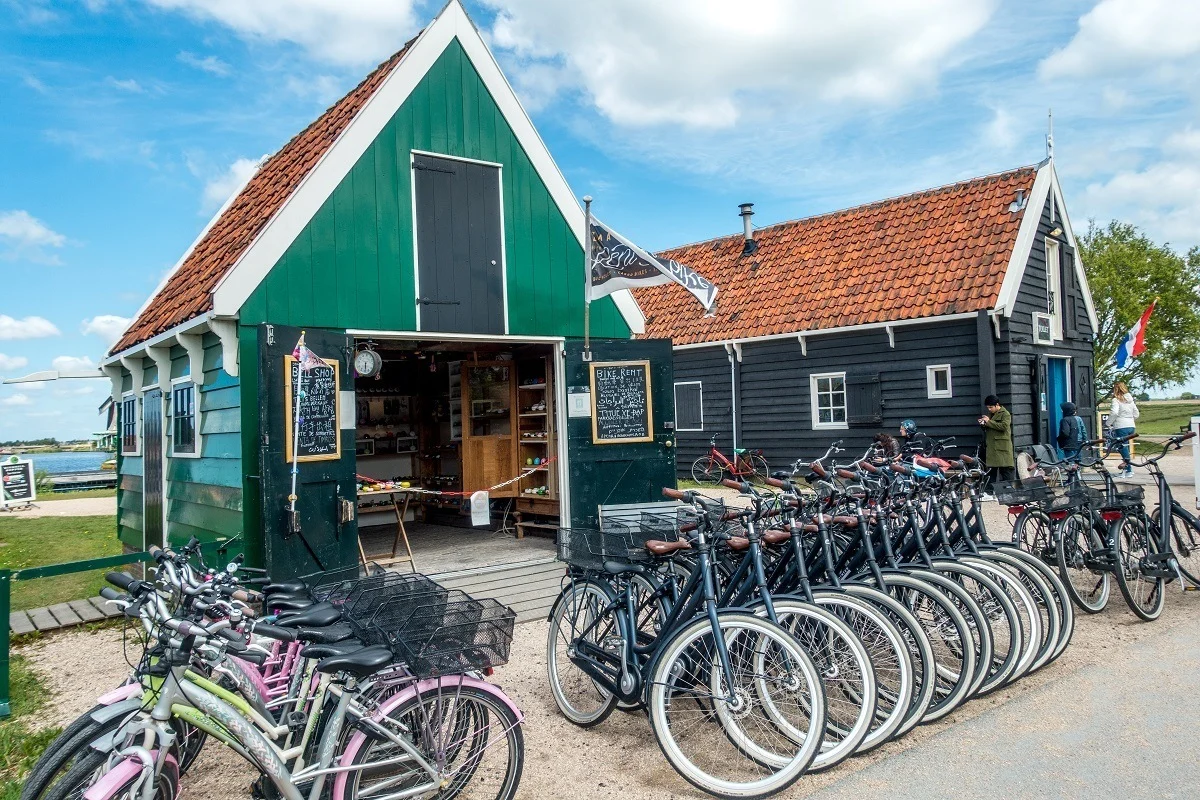
To construct the open-air museum, original buildings from the time period were assembled from all over the district. Many needed repair and restoration because of their age, and other buildings and mills were reconstructed in the typical style to round out the historic representation. The assembly was painstaking and happened predominantly over a 15-year period beginning in 1961. The result is one of the few places in the world where you can still find functioning traditional windmills.
Many of the buildings are now museums, workshops, gift shops, or restaurants. Some of the windmills in the neighborhood are also open to the public and operate much as they would have centuries ago.
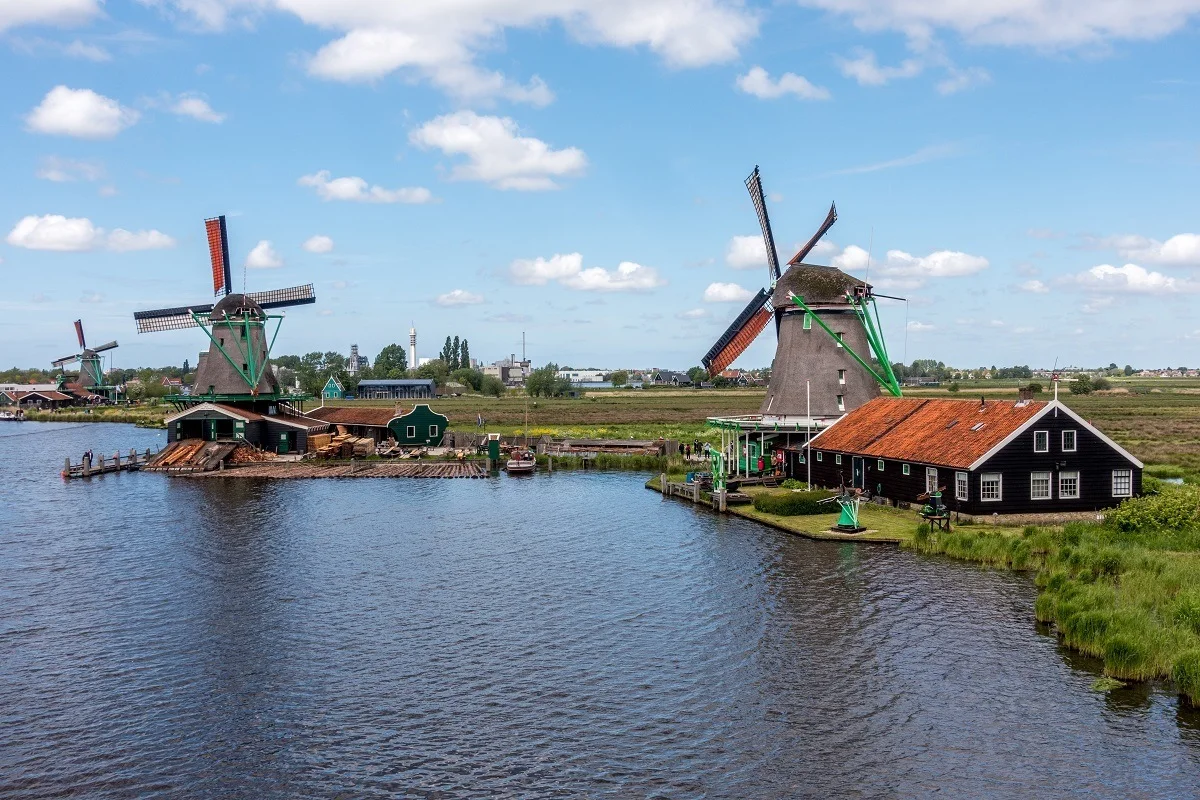
Zaanse Schans Windmills
The windmills are the main attractions here. There are 13 mills on the property, about half of which are fully functional and open for visits at least part of the year. In the 18th and 19th centuries, these hulking buildings were the lifeblood of the Dutch economy, making all kinds of items from furniture to paper to flour.
Today, the windmills vibrate with activity. Literally. The mills are still working, producing peanut oil, paint pigments, and wooden creations, so employees are hard at work. But in addition to the manual labor, the windmills themselves hum and tremor (just slightly) under foot. As we climbed up the ladders to watch the giant, grinding wheels and gears, we caught sight of the sign, conveniently in four languages—“The visit to this mill is entirely at your own risk.”
There is nothing actually dangerous about seeing the windmills in action on a tour. But the sheer size of their inner-workings can be quite astounding. It takes a lot of energy to grind, pulverize, saw, and extract.
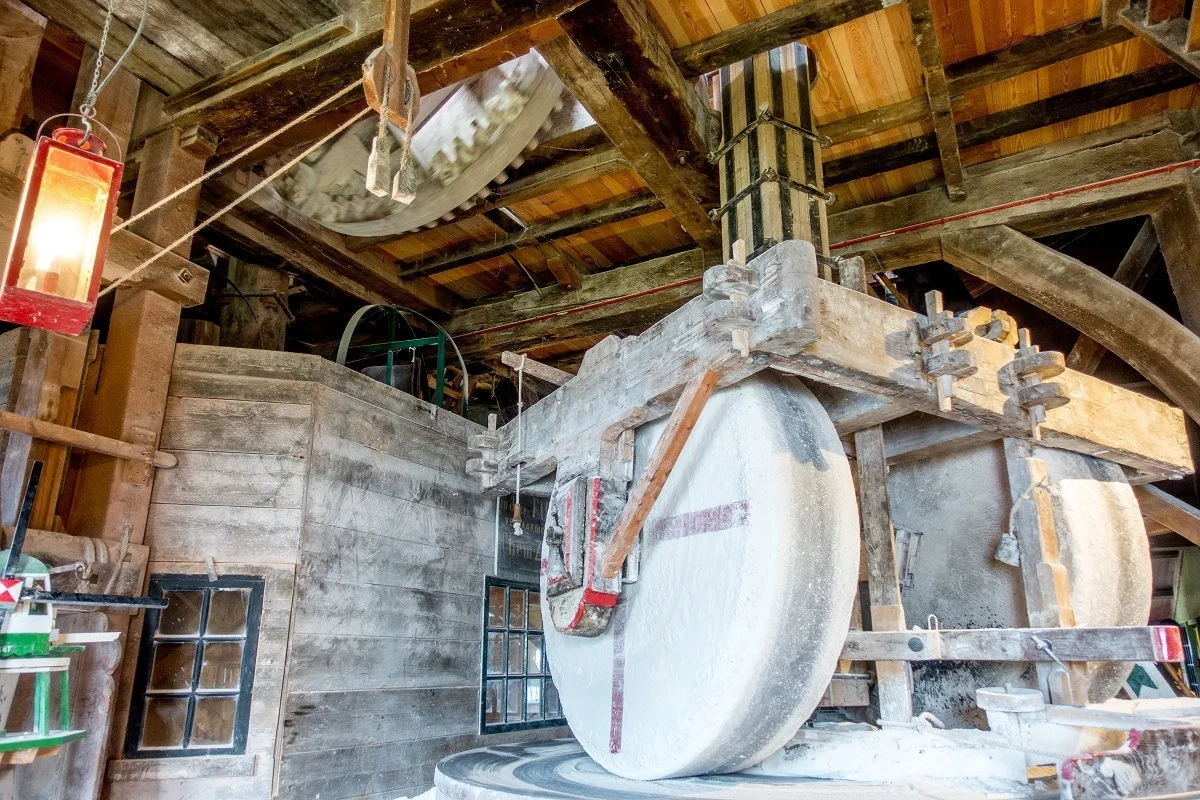
Watching the mills at work is a window into history. The mill De Kat is particularly historic. The last remaining wind-powered paint and dye mill in the world, it was built between 1646 and 1696. It was destroyed by fire in 1782 and then quickly rebuilt. Most days, you can see it grinding chalk to make traditional pigments for paint. We loved watching the sails whoosh by up-close and seeing the view of the complex from De Kat’s upper level.
A few steps away, the oil mill De Zoeker is one of the oldest structures here. Built in 1610, it first pumped water before becoming an oil mill, a paint mill, and returning to an oil mill again. It has stood in its current location since 1968 making peanut oil on site.
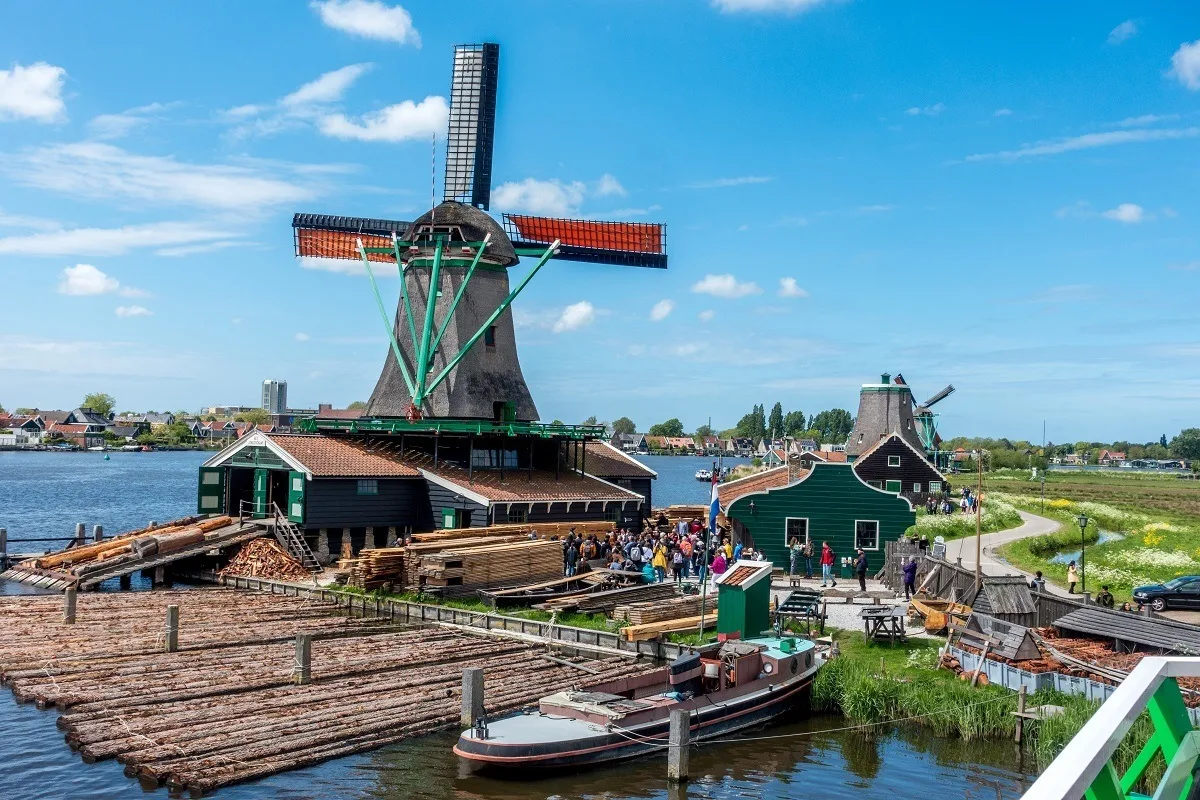
The biggest operation is the wind-powered saw mill, Het Jonge Schaap, and it’s one of the newest additions. The original mill was built in 1680 in Zaandam and was demolished in 1942. In 2005, craftsmen undertook the project of rebuilding it in the traditional style and based on original drawings. Visitors can see a video about the building process inside the mill. Het Jonge Schaap is a commercial business that saws wood for sale and builds furniture on site. It’s fascinating to watch the creations taking shape in front of you.
Workshops, museums, and stores
The museums and shops highlight different aspects of Dutch culture with a focus on what life was like in the Zaans district. The six museums and seven handicraft displays and workshops each focus on a different craft or profession, giving visitors lots to choose from.
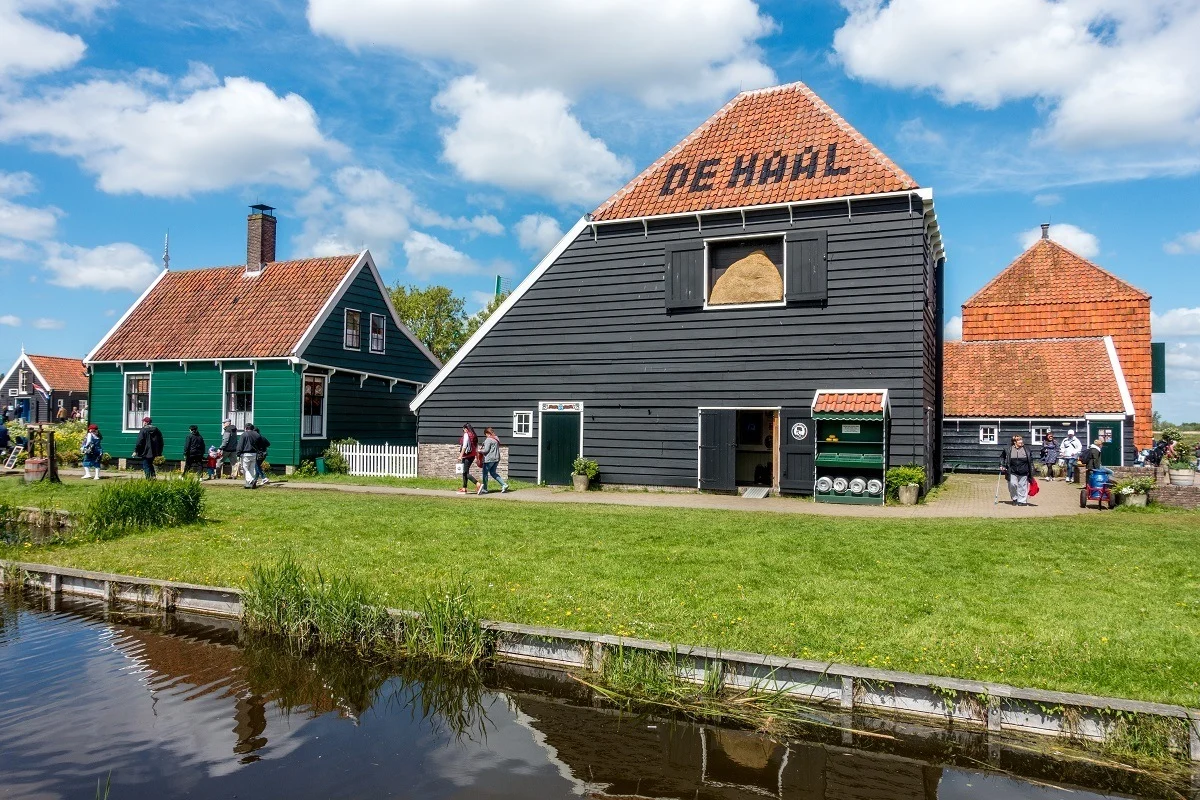
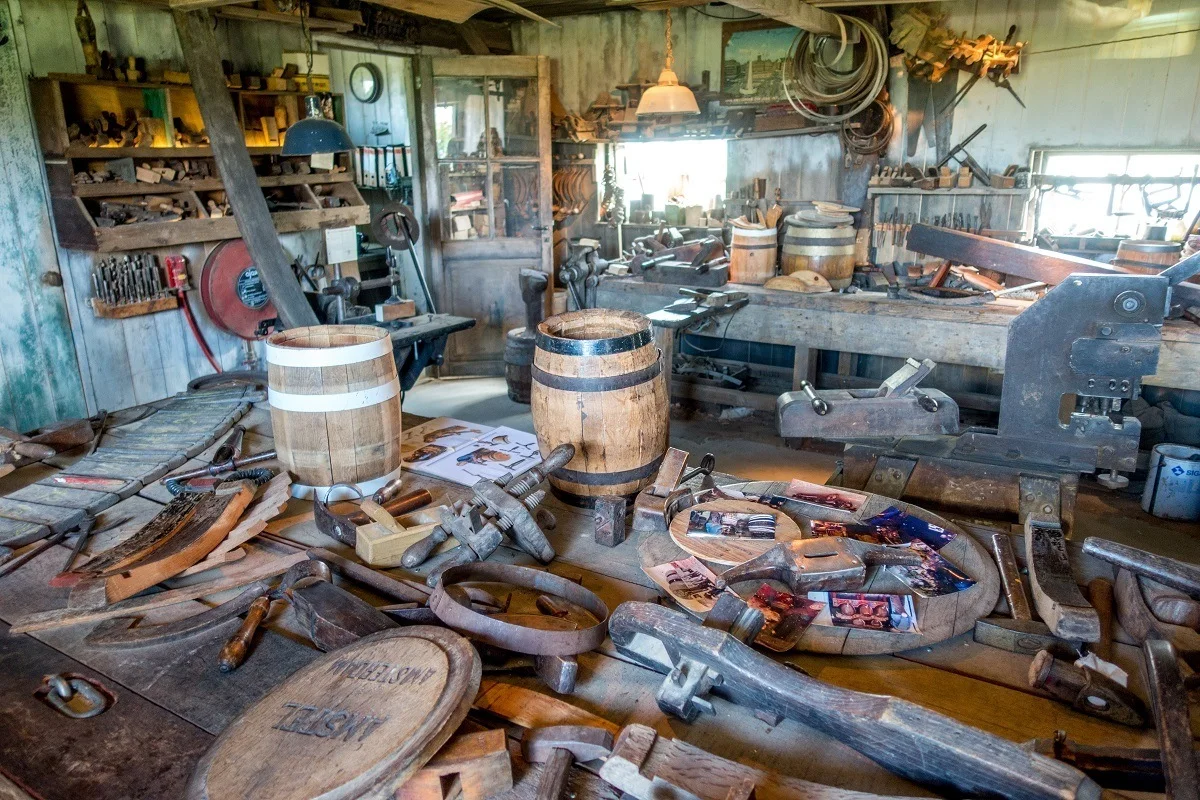
In the Weaver’s House, you can see a weaver at work making traditional Dutch sails. Nearby, the cooperage is the recreated workshop of a barrel-making company where you’ll learn everything you ever wanted to know about the craft and see the tools up close.
At the Jisper House, you’ll feel like a time traveler in this fisherman’s cottage set in 1850. There is information about the herring fishery and whaling in the small village of Jisp, and you can have your photo taken in traditional Zaan regional clothing.
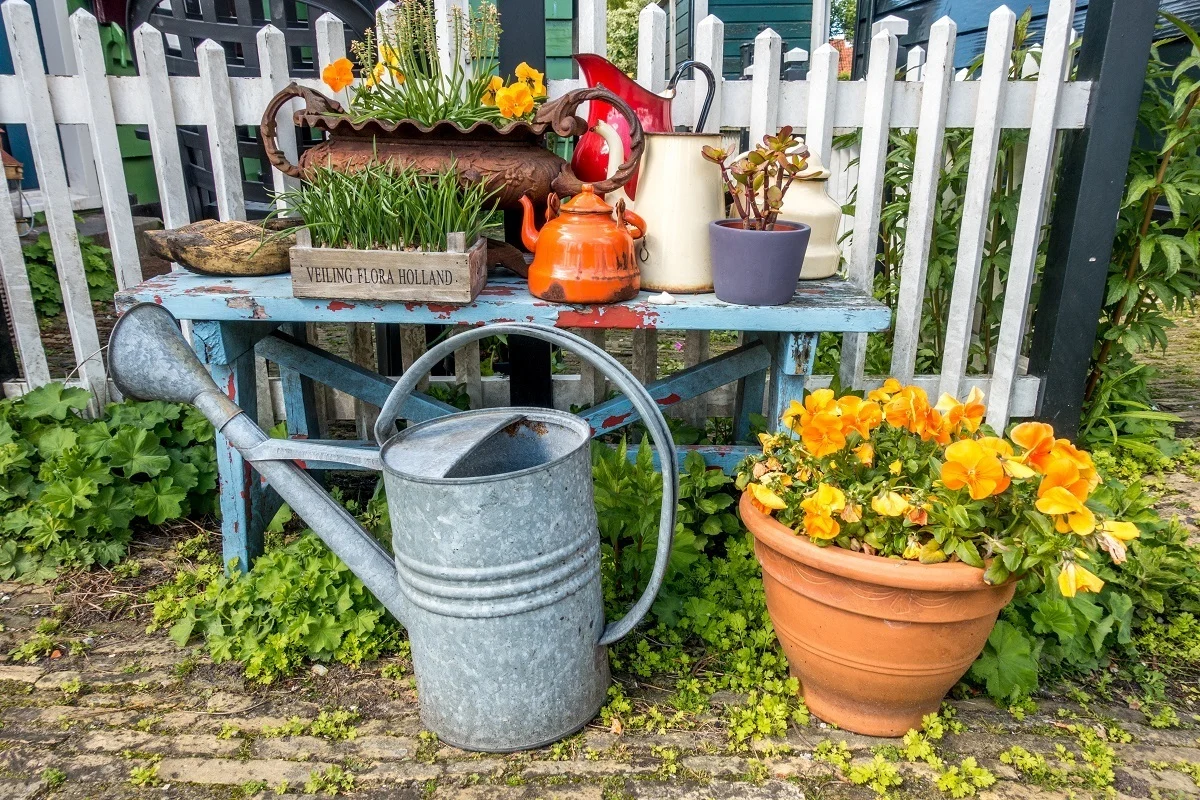
Two of our favorites were among the most popular places to see on a day trip—the cheese farm and the clog workshop, both products that are practically synonymous with the Netherlands.
I have a thing for Dutch food, especially cheese. At Catharina Hoeve, a replica of a traditional farm, it was hard to pick from the dozens of kinds of cheese available for tasting. We learned about the differences between jonge kaas (young cheese, aged 4 weeks) and oude kaas (old cheese, aged at least 10 months) and different methods of production for different varieties. We even got to see part of a cheese-making demonstration.
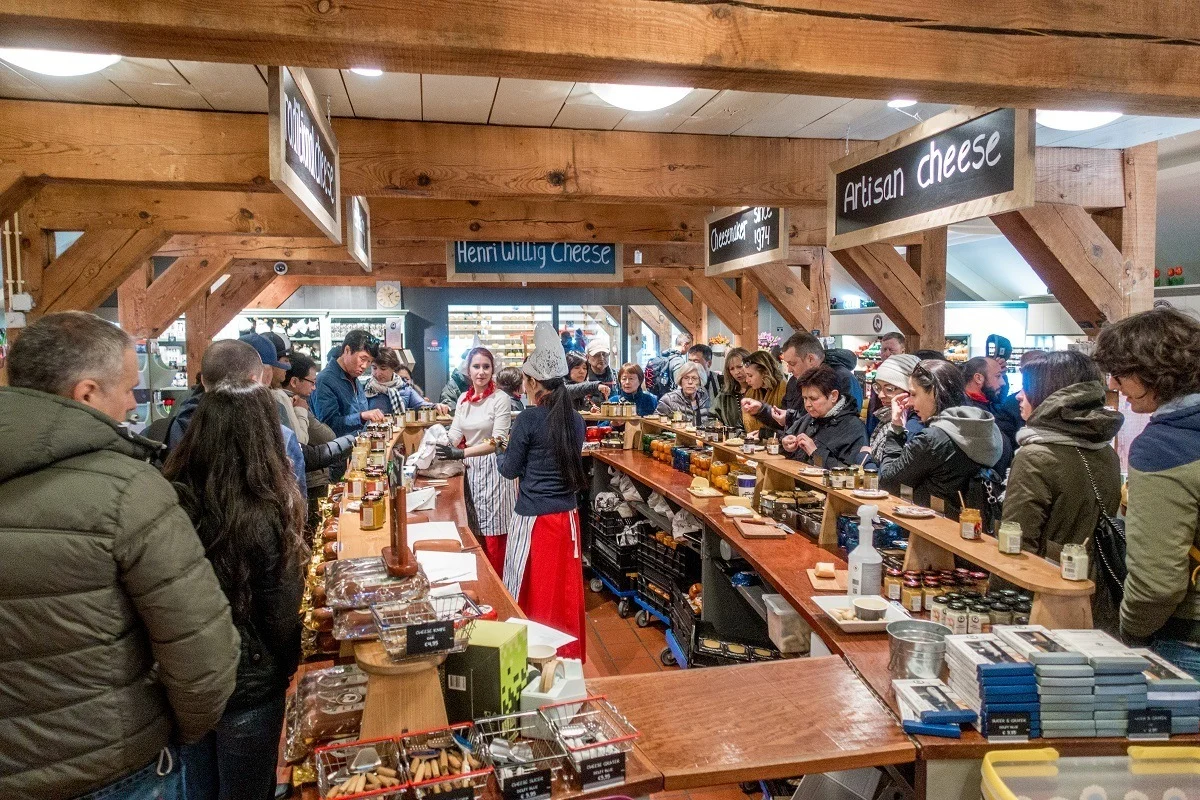
All the cheeses are packaged for travel, and there are lots of condiments and other foods to choose from to take home with you. The cheese shop was probably the most crowded stop we experienced, but for good reason—it’s delicious.
The experience was similarly hands-on at the clog workshop where the famous wooden shoes transform from a block of wood into something wearable in the matter of just a few minutes.
The clog workshop is part history lesson, part demonstration, part souvenir store, like many of the shops. It began with the history of the clog going back to the 9th century. There were historic clogs, “ice clogs” with iron fittings, clogs with elaborate decorations given as wedding presents, and others with detailed designs that are over 300 years old and only worn on Sunday. You’ll even see my personal favorites—the clog skates.
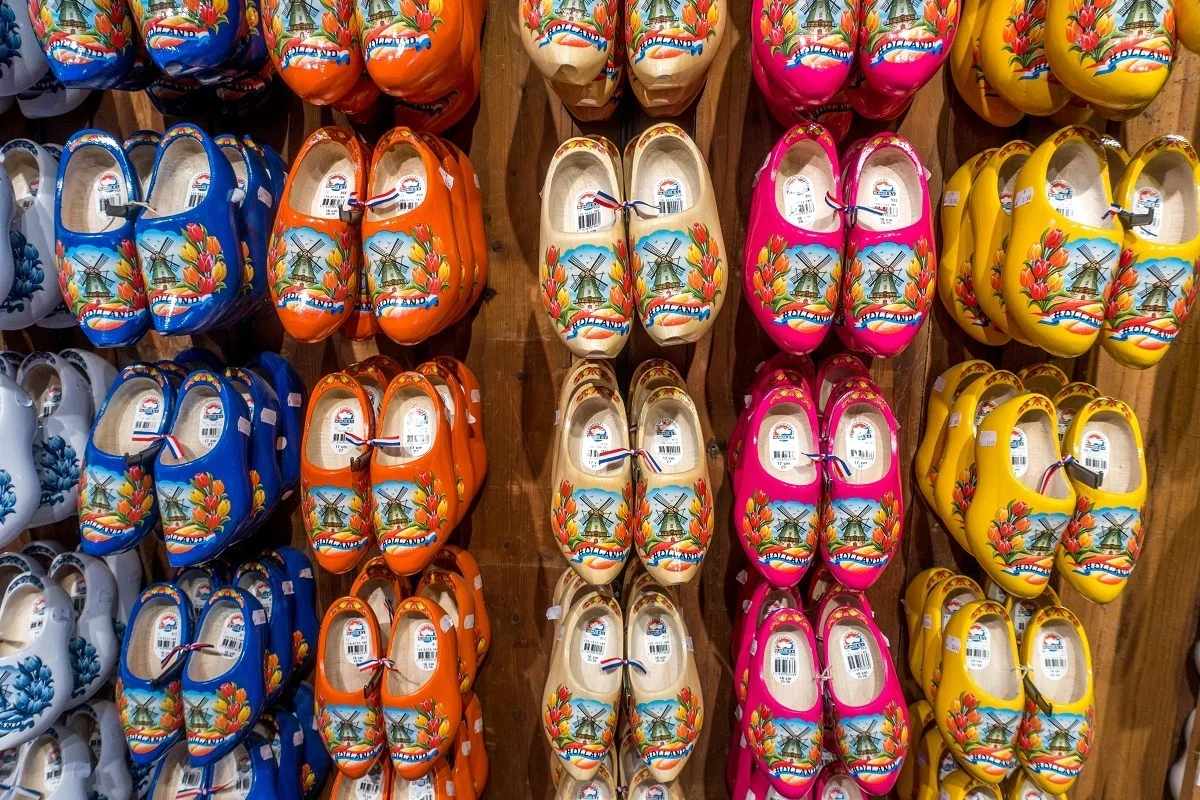
When enough people assembled for the demonstration, we were led into the workshop. Hundreds of years ago, clogs were made by hand and a craftsman could make up to seven pairs per day. Now, it takes just five minutes for the workers to chisel, hollow out, and sand the iconic wooden shoes. It’s quite impressive to watch.
After the demonstration, you can visit the shop, which has the largest selection of clogs in the Netherlands in all colors and sizes. You can buy decorated versions of the shoes for as little as €30, or keychains, clog slippers, or lots of other clog-related souvenirs.
Zaans Museum
The Zaans Museum is easy to pick out not only because of its size but because it’s the only contemporary looking building on the property. With more than 32,000 historical artifacts, the Zaans Museum is dedicated to giving visitors an in-depth understanding of the Zaan region and how it and its people have changed over the centuries.
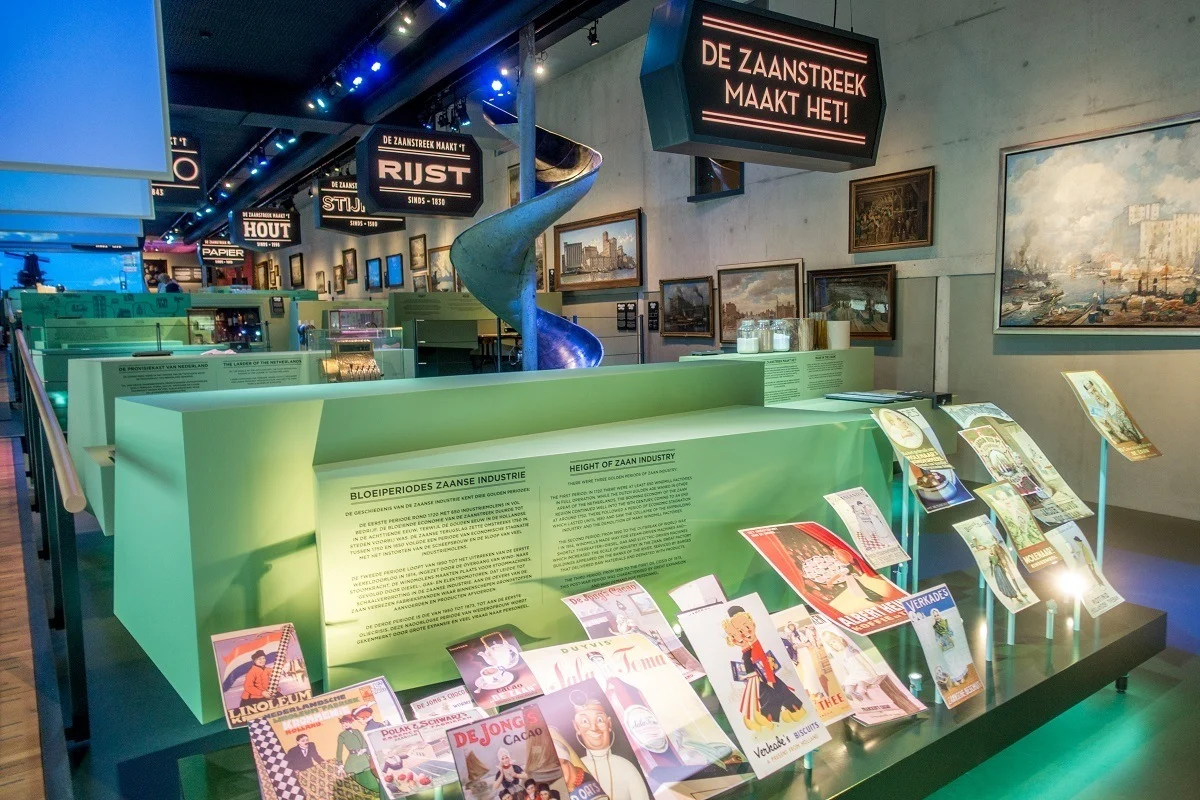
The Zaans Museum has two main areas of focus—the industrial culture that drove the economy of the region and the lives of its people. As a result, the displays include lots of items from companies like the chocolate maker Verkade, the supermarket chain Albert Heijn, and the packaged food maker Honig, which are famous names in the Netherlands but may be less familiar to visitors from other areas. The residential culture collection includes furniture, traditional regional costume, and other items that would have been in the typical resident’s home.
There are also a number of artworks in the museum. Large family portraits show prominent Zaankanters (residents of the Zaan region) in their best dress, and other works depict the picturesque landscape which is still echoed today in the windmills just outside. The most famous work in the collection is Claude Monet’s “The Voorzaan and the Westerhem,” a work showing the mills and boats of the region, which he painted here in 1871.
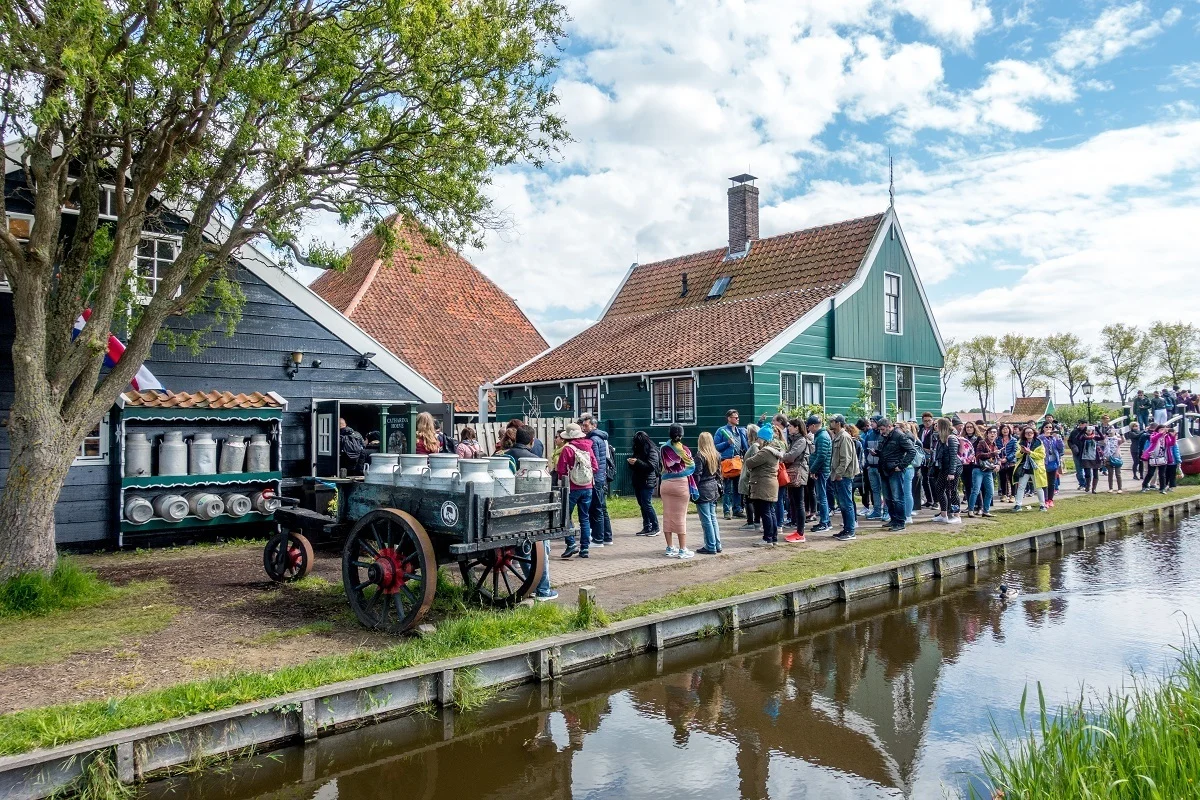
Is it touristy?
Yes, but not in a bad way.
First, let’s talk about crowds. Over 2 million people visit the windmill village each year, making it one of the most popular attractions near Amsterdam. Luckily, the site is large, so there is room to spread out so that things don’t feel packed. During our visit, it seemed that fewer people made the trip out to the mills that were farthest away from the main area. But there is no denying that it gets busy and is popular with tour groups.
Secondly, there are the facilities and activities. The buildings and windmills are original, reconstructions, or built in a traditional manner, so they are authentic to the time period. The windmills—some of which are 300+ years old—are particularly impressive and are enough reason alone to visit for several hours.
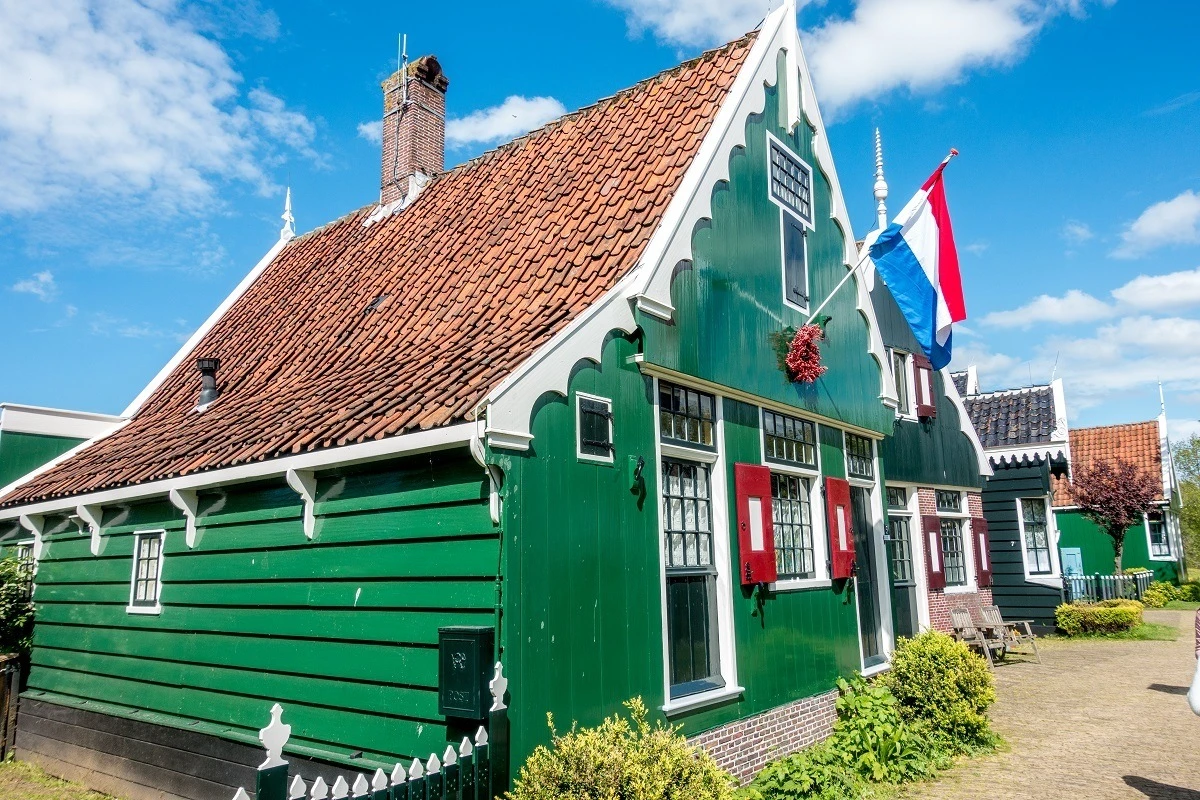
Some of the museums and workshops are entertaining and informative. However, as with many tourist attractions, there is emphasis on shopping and buying souvenirs. Some people love that, and some are completely turned off by it. If you’re not traveling around the Netherlands, it may be a great opportunity to buy some clogs or take home some Gouda cheese, but if you’re actually visiting Gouda, for instance, you may find the offerings here kitchy.
Is visiting worth it?
It was for us. We loved the chance to soak up the history, explore the windmills, and learn about the Zaan district. Other people we spoke to throughout the day expressed the same thoughts. With so many people coming here each year, it’s unlikely that many of them dislike it, or it wouldn’t be so popular. In particular, people traveling with children thought it was a great chance to get their kids engaged and spend some time outside.
If you set your expectations and limit your time in the crowded and shopping-oriented spots (if those things bother you), a day trip to Zaanse Schans can be exquisite.
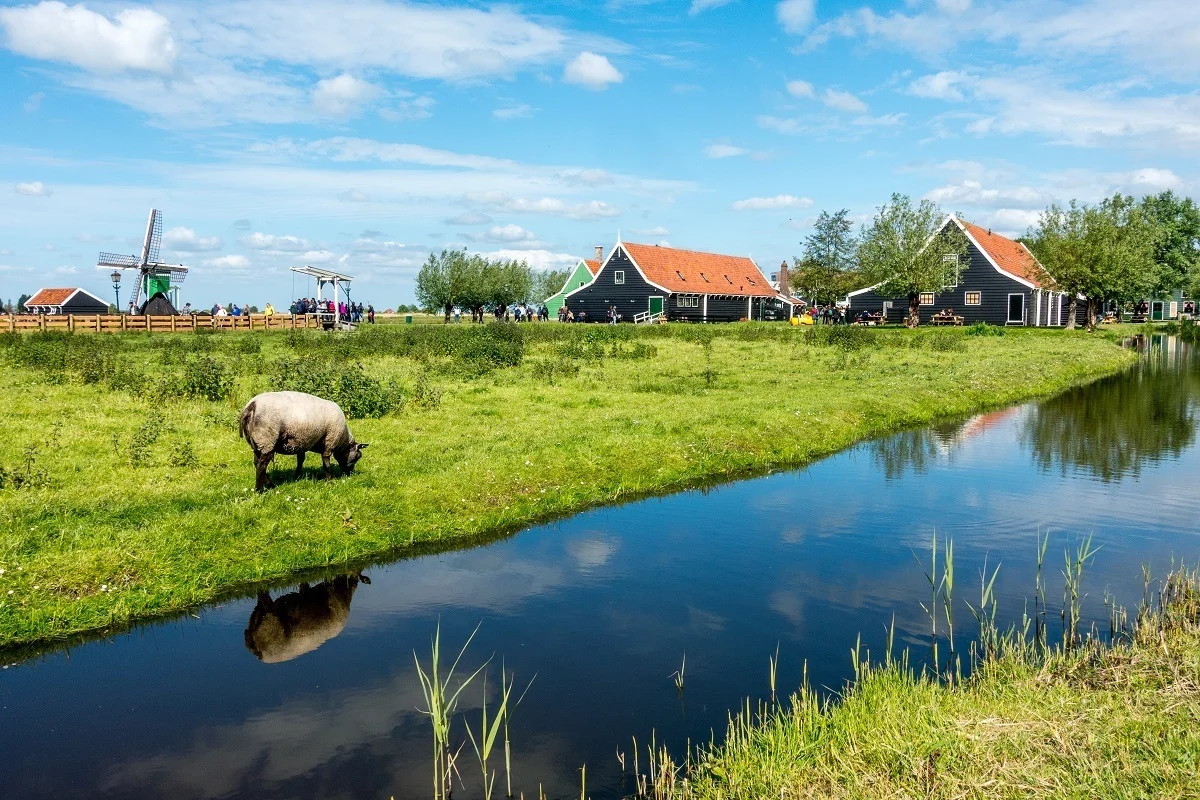
Ticket costs
You can spend as much or as little as you wish based on the activities you choose. Seeing the exterior of the buildings and the mills and entrance to some of the buildings is free.
Individually, the Zaans Museum ticket is €14.50 for adults. Each windmill costs €5.50 to enter, and the Weaver’s House, Cooperage, and Jisper House are €2. You can save by buying a Zaanse Schans card, which includes entrance to multiple buildings and mills as well as discounted parking.
If you’re planning to visit more attractions in Amsterdam, consider buying the iAmsterdam Card, which can be a great value and covers all the costs.
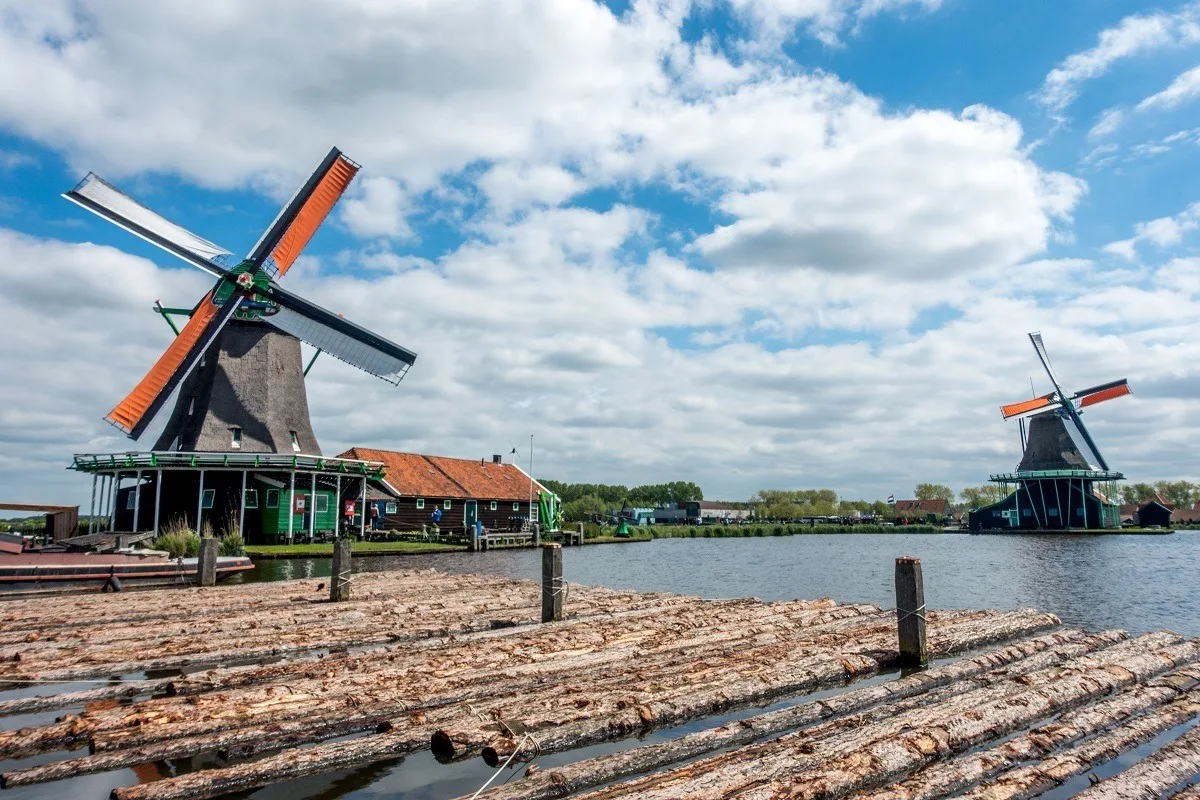
How to get there
There are three easy ways to get here. The first is to take a tour, which is particularly desirable if you’d like to combine a visit to the park with another experience. This half-day tour includes a visit to the park and the towns of Marken and Volendam, and this full-day option adds a stop in Edam. To see Zaanse Schans along with the tulips of Keukenhof, consider this tour.
Visiting from Amsterdam is also straightforward via public transportation. The simplest route is to take the Connexxion bus 391 from Amsterdam Central Station to the stop right in front of the park. The trip takes about 40 minutes. The express bus 891 takes just 20 minutes.
If you prefer the train, leave from Amsterdam Centraal Station headed to Zaandijk Zaanse Schans station. The trip is about 18 minutes, and there are 3 trains an hour. From the Zaandijk station, the walk to the park is about 15 minutes (.9 miles, or 1.44 km).
Laura Longwell is an award-winning travel blogger and photographer. Since founding Travel Addicts in 2008, she has written hundreds of articles that help over 3 million people a year get the most out of their travel. In that time, she has visited nearly 60 countries on 5 continents, often returning to favorite destinations over and over again. She has a deep love of history, uncovering unexpected attractions, and trying all the good food a place has to offer.
In addition to Travel Addicts, Laura runs a site about her hometown of Philadelphia—Guide to Philly—which chronicles unique things to do and places to see around southeastern Pennsylvania. Her travel tips and advice appear across the web.

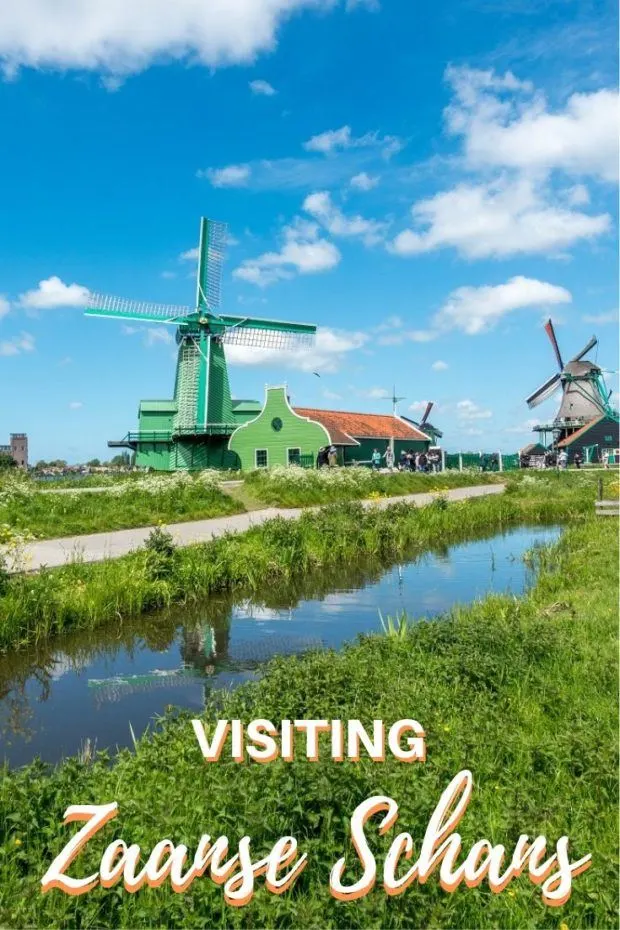
Kathy
Monday 31st of May 2021
My daughter and I went there and we loved it. We travelled 19 countries in 7 weeks and we remember this place the most. Well worth it to visit. Spend an entire day there you will not be disappointed. Kathy and Sarah